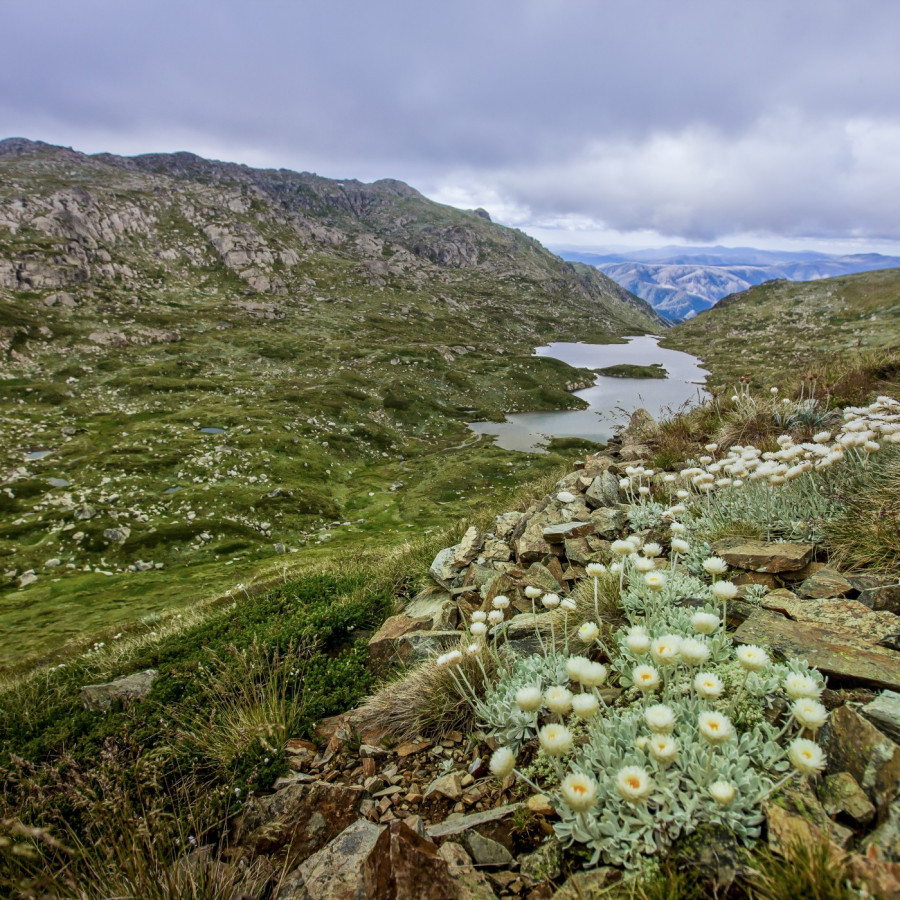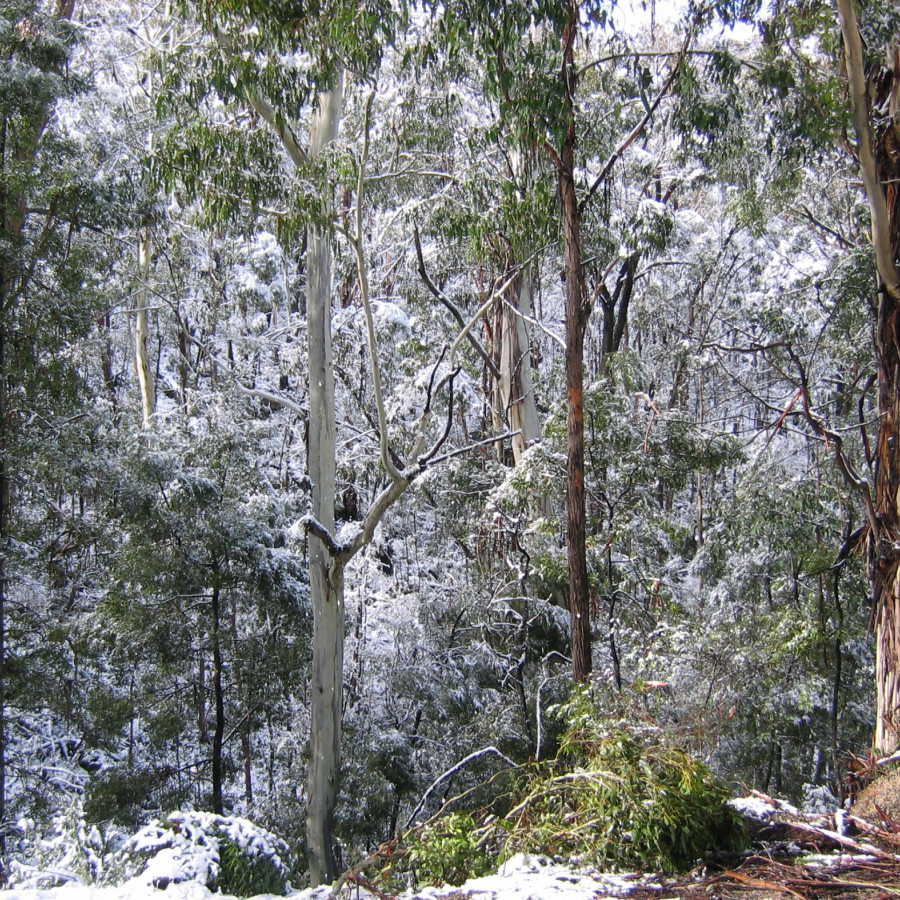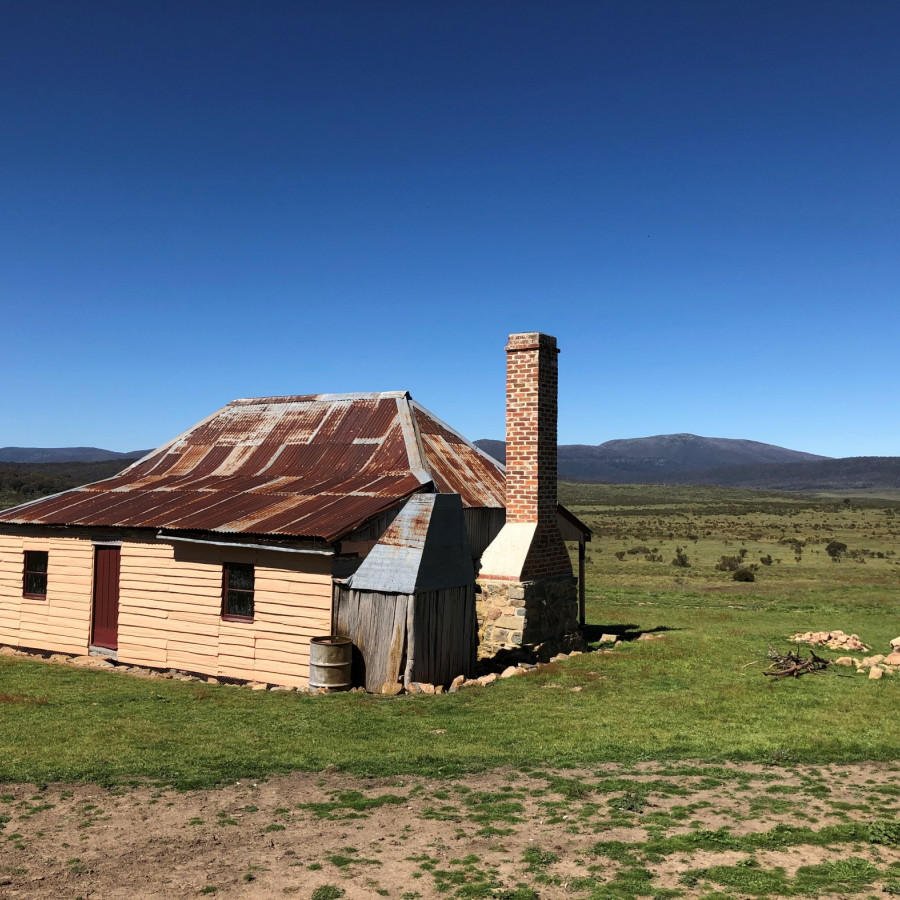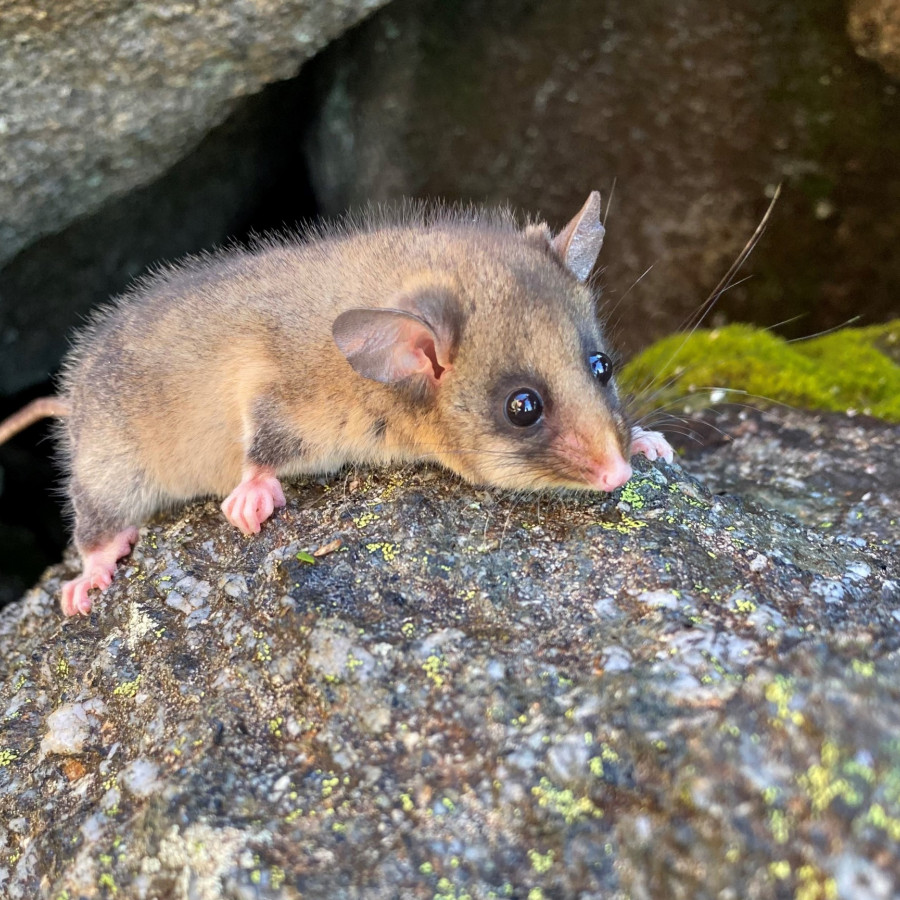About the Huts
About the Australian Alps Iconic Heritage Huts
There are over 200 historic huts, buildings and structures across the National Heritage listed Australian Alps National Parks and Reserves of the ACT, NSW and Victoria.
These huts and structures represent the diversity of previous land uses and help tell part of the historic and continuing story of the evolution and human interaction of this remarkable landscape. Whilst many of the huts are associated with past periods of pastoralism, many are also associated with mining, surveying, logging and milling, hydro-electric development, scientific research, conservation and park management or recreation such as skiing, bushwalking or fishing.
While the intact huts, ruins and sites of former huts are associated with a more recent part of this story, their presence in particular locations also act as markers for a far older and continuing landscape story of the Australian Alps Aboriginal Traditional Owners and first inhabitants. Aboriginal people came to the region at least 21,000 years ago, creating networks of pathways through the mountains, along ridges and valley floors. These cultural pathways link ceremonial sites along the mountain ranges as well as camps, settlements and other sites rich in natural resources and are still valued and still have strong associations with Aboriginal people and communities today.
The huts also are associated with the modern day story of volunteers through the Kosciuszko Huts Association (KHA) and Victorian High Country Huts Association (VHCHA), being two community voluntary associations formed to assist with the conservation, management and reconstruction of huts, homesteads and surrounds within the Australian Alps. You can help care for the huts and there associated heritage by joining or supporting these volunteer groups and by following the Hut Code when visiting any of the huts and learning more about the values and how huts of the Australian Alps are managed here.


The Australian Alps has around two hundred historic huts. With some dating from the 1860s, the huts come from every era of European history in the Australian Alps. They were built for simple shelter by graziers, gold miners, foresters, government workers, skiers and bushwalkers.
Huts have always been left unlocked, stocked with matches and a small amount of dry firewood and kindling. People generally looked after each other. They needed to if they were to survive the rigours of mountain life. This tradition, maintained today, has helped many people in trouble and will undoubtedly help more, maybe even you.
These huts represent part of the rich cultural heritage of the Alps and the huts need to be managed to ensure their survival.
No matter what kind of activities you enjoy in the Alps, you can minimise the impacts you have on the environment and other visitors by following some simple rules.
Challenge yourself to leave as little trace of your visit as possible. Care for the Alps now – so they’ll be just as wonderful in the future.
Huts to visit
There are a number of well-known huts in the Yarrangobilly region including Currango Homestead, Long Plain, Coolamine and Oldfields huts. Also well-known in the Victorian High Country are Wallace’s Hut and Cope Hut, in the Bogong region.
Log books may help save your life, please fill them in
If you fill in the book stating the details of your journey, number in the party and intentions, it may assist in search and rescue operations. If the log book is full, please inform the park service responsible for the hut and it will be replaced.
Sheltering in huts – never rely on reaching a hut
Plan for every situation, take shelter before you get wet and tired. When mountain weather closes in huts can be difficult to find. Ensure you are equipped to camp out as blizzards can occur any time of the year.
In severe weather, take shelter early before you get wet and tired.
On the 13th July 1972, Graeme Edenborough died a tragic death in a snow cave while trying to reach a hut. Greg Retallack, Graeme’s companion, later recorded this account of the events leading to the death:
“We woke early on the 13th July and set off in still conditions with fresh snow flakes gently falling. Graeme was so hot he stopped to take off his jumper. We rounded a long ridge running south of Jagungal, where the wind first hit us with a sudden icy blast. We were about halfway to Mawson’s Hut and pushed on. By the time we skied down the valley we were wet through on the windward side. Climbing up a creek on Cup and Saucer Hill the wind was to complete the job, so that we were now wet all over.
Eventually we came upon the Valentine River which we could recognise by its distinctive ice pools. We followed it south trying to locate our landmarks. The poor visibility affected our sense of scale. Wet and demoralised we headed east before the wind. The strategy here was to ski over the range out of the strong westerly wind, into the tree line and perhaps to Alpine or Kidman’s Hut.
The wind was unbearable at the crest of the ridge so we decided to dig snow caves behind a huge rock. The caves were half completed when the weather cleared to the east, the wind and clouds still gusting in from the west. This short view showed us Burrungubuggee Creek and to the left, the Bulls Peaks and to the right the Big Brassy. Alpine and Kidman’s Huts were in easy reach, down the valley and out of the wind.
Our feet and hands were frozen and the cold relentless. We decided to ski down. At very worst we could bivouac in the trees and perhaps make a fire on the snow.
I skied one leg of about 200 yards and then turned and fell, losing a ski downhill. I chased after it madly and when I found it, I waited impatiently for Graeme behind a snow bank only three hundred yards from our old snow caves. Graeme always took pains to stay ahead of me. What was he doing? Was he in trouble?
Leaving my skis, I ran up the bank and found him trying to stand up after a fall. His socks were down and his legs cut by ice. He could hardly talk. ‘Did you ski down here?’ – came out slowly as if he were drunk. It was exposure – there was no doubt. I helped him down, carrying his skis to where I had left my own gear behind a snow bank. He seemed completely incapable of doing anything to help himself.
I dug a shallow ditch in the snow and put him in his sleeping bag and bivvy bag. I was now feverish with activity digging a snow cave with a fry pan, building a wall with excavated snow, feeding Graeme biscuits and trying to reassure him. I tried to elicit some intelligible response from him.
When all attempts failed and the snow cave was half finished I became really worried and dragged Graeme inside. He was impossible. His body stiffened against me as I tried to drag him to my own cave. He kept trying to crawl out and after a while I let him. He lay outside in his sleeping bag staring at the sunset in the valley below beyond our reach, while I dug his cave deeper. When it was done I tried to drag Graeme back inside.
He resisted every effort and it was only when I lost my temper completely that I could muster enough strength to force him inside the cave and out of my way. I was exhausted and very alone and quickly set about digging my own cave. It was not really big enough. I felt shooting cramps in my legs whenever I knelt. I had never had cramps in the body before and began to worry about myself. Soon I was in my own sleeping bag and bivvy bag,my pack at my head over the entrance. Graeme’s head was in my lap and I tried to warm him. He was in deep sleep breathing heavily. I was jubilant. We were both alive.
It was dark when Graeme started moving. He was punching me and moving his legs as if skiing. He moaned and cried ‘Help’ and ‘Greg’ while I pleaded with him to stop moving, conserve heat, answer me sensibly. He gave a final moan and was still.”
Huts magic
Some of Australia’s most valued real estate is tucked a long way away from any sealed road. Often only a single room plus lean-to, these simple buildings are dotted across the vastness of the Australian Alps – iconic shelters built with purpose. And it’s through the very real reasons that these huts were created that so many people feel a connection, often generations after they were built. The care of these structures lies in the hands of parks agency staff who simply couldn’t achieve what’s necessary without volunteers from the various alpine huts associations. Speaking with just three people responsible for managing huts shows how easy it is to be caught up in their magic..
Jennifer Dunn, a conservation officer with ACT Heritage, is a self confessed ‘hut nut’. Daily her work involves looking at nominations for places to be included on the ACT Heritage Register but her pulse obviously races when the nomination concerns an alpine hut. “I worked on the rebuild of Pretty Plain hut alongside the volunteers. My husband did too and now he understands why I value huts. It’s lovely to think that my daughter will be able to go back in 20 or 30 years time and say, my mum and dad rebuilt this roof.”
Perhaps people so often react this way simply because a hut is a tangible object which shows that other people were here before us. And for those who know how to look closely, there are complex stories to be told, simply through the adze marks on a piece of timber. Run your hands across the surface and you’re touching a moment in another time.
Such as when drought-filled summers drove cattle and sheep from the plains up into the high country where the grazing was good. “We have the remnants of little crude structures which stand as evidence of the hardship and struggle experienced by these people. It was bloody hard work, to round up the animals at the end of the day then light a fire, eat, sleep and then start the whole process over.”
Knowing the stories – the cultural value based on the context of a structure – is vital to managing and protecting a site. It’s not simply a case of popping a new structure in the same spot when the original one finally crumbles (although there are instances where the new huts have been reconstructed). There is too much in the original fabric of the structure to lose if this happened, which is why so much unseen effort goes into taking stock, and making sure that this stock taking is made by people who know what they are looking at. Typically, rangers and volunteers from the huts associations together assess the sites – both to determine their heritage and social values, but also with the view of ongoing maintenance.
“We look at long term management of each hut via any existing Hut Condition Reports and Works Plans (which take into account any background information such as Conservation Studies and Conservation Management Plans – the CMP’s ). This ensures all works are sympathetic to the place. The CMP is a functioning, detailed document, one where a ranger or volunteer should be able to flip to the right page and gain some immediate direction about what works should be undertaken. Anyone can pick it up and understand what makes each hut significant.”
And this is the whole point, because an uninformed glance could easily miss (and then possibly damage) what makes a particular hut valuable. For example, Waterhole Hut in Namadgi National Park is not significant merely because of its looks. “It’s appearance is pretty ordinary, a typical corrugated iron clad shelter.” But as part of a complete setting, it’s a good example of 1930s vernacular construction. With the nearby drop log yards with their Y forked logs and sheep dip, “You can see the fantastic amount of labour that went into construction.”
Chris Smith (heritage planner with Parks Victoria), agrees that a huts heritage or historic use value – the reason they were built in the first place – is just the beginning. For many it includes the many ways they may have been put to use since…
“Grazing, land management, hunting, mining, fishing, logging, scientific research; for all these different activities huts are one of the most tangible reminder of these things. Some stories would be difficult to tell without something in the landscape to help tell it. If you come across a logging hut it’s a great opportunity to make a connection with the people who built the hut, lived here, worked in the Alps. It’s a way to understand their land use activities.”
Whatever their origin, in current times huts can also play a refuge role. “Though visitors are encouraged to go prepared to camp out, if circumstances demand it, huts do offer shelter. Some – such as Cleeve Cole Memorial Hut – exist simply because there was no shelter when it was needed.” (This particular hut was built in 1937 in memory of skier Cleve Cole who was caught up in bad weather and died of exposure despite the efforts of his companions.)
Huts are clearly appreciated for their aesthetic value. “People appreciate their rustic character, the smoky interiors, the timbers and furniture polished through years of use. Huts appear picturesque in the landscape. Of the thousands of hectares in Victoria’s Alpine National Park, where do people go? To huts. They are a focus of activity, a destination. Surely this is a measure of their value.”
Chris also points out a continuity that may not be obvious at first glance, that huts are usually well positioned, and not by chance. Very often the people who took cattle into the Alps followed the existing pathways of the First Peoples. They’d build their huts where there was natural shelter and water, often at a place where these pathways crossed – places where people had always camped.
According to Jennifer Dunn, Megan Bowden, a ranger with the NSW Parks and Wildlife Service is also a ‘hut nut’. Part of Megan’s role involves the logistic coordination for huts maintenance through to reconstruction of huts burnt in 2003- a challenge ramped up by the location of many of the sites in Kosciuszko National Park.
Megan explains that rangers are ultimately responsible for the huts in their patch, and are guided by a management plan for each. This to do list and significance assessment has been put together by a heritage consultant in consultation with the ranger and with each hut’s volunteer caretaker group. While the items on the list may be familiar to most home owners – roofing, drainage, stumping – for huts, a slightly different approach is necessary.
“The aim is to carry work out in a balanced way – to do as much as is necessary but as little as possible – to retain as much of the original fabric but keeping in mind that you don’t want the hut to fall down.” For example, if a hut’s original stumps are timber, replacing them with obscured concrete equivalents may extend the huts ability to weather longer before the next maintenance intervention is needed.
There are 70 huts in Kosciuszko National Park, over 200 still standing across the Alps, and as Megan points out, “… each one is different; not one is the same.”
This is because they display different materials in a range of ingenious often out-of-necessity combinations. Log, corrugated iron, split slab, river stone, pisé or rammed earth – there are endless combinations. “There are no hardware stores in the Alps so the people who’ve built these structures have been masters of making do: using fencing wire instead of nails; cannibalizing old huts to recycle them into new structures. We also see changes in technologies – where bark and shingles roofed early huts, have been replaced with corrugated iron, sometimes simply by laying the iron sheets over the top.”
No wonder huts offer visitors such a rich means of interpreting European culture in this setting. “You can’t understand a hut from a picture – you need to go in, to feel the stories of the people who have been there before you, the legends and the myths. A hut is something to experience.”





